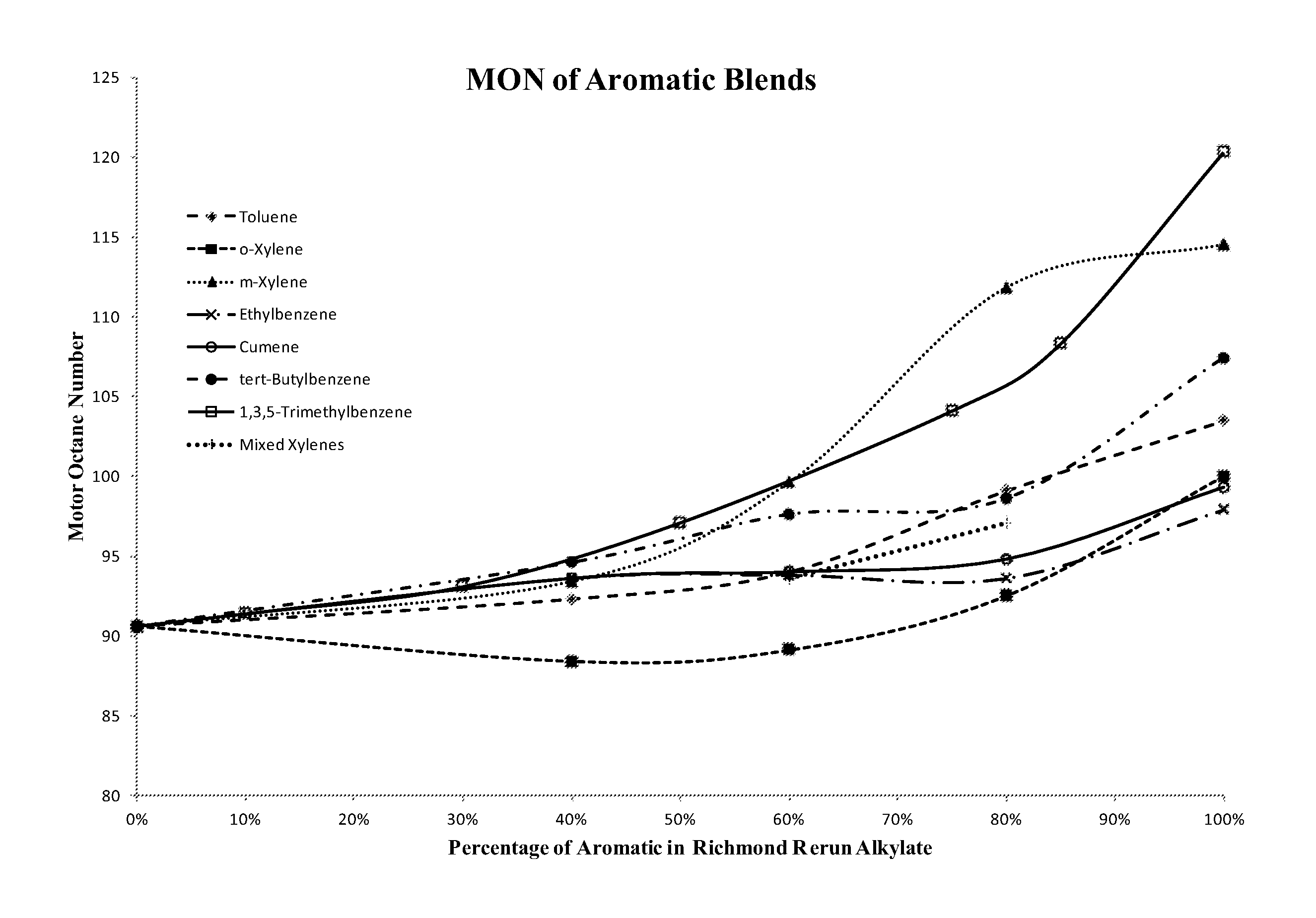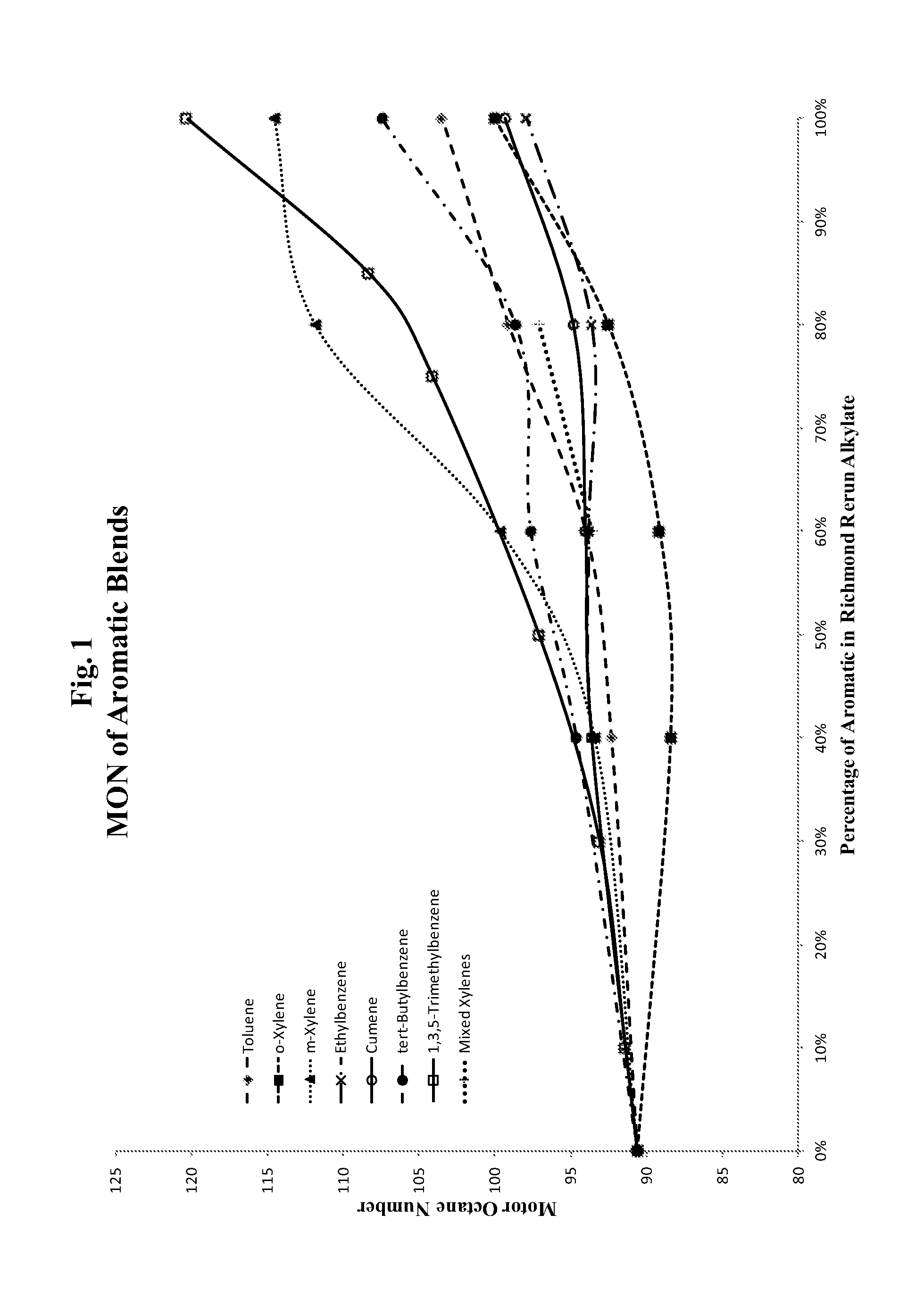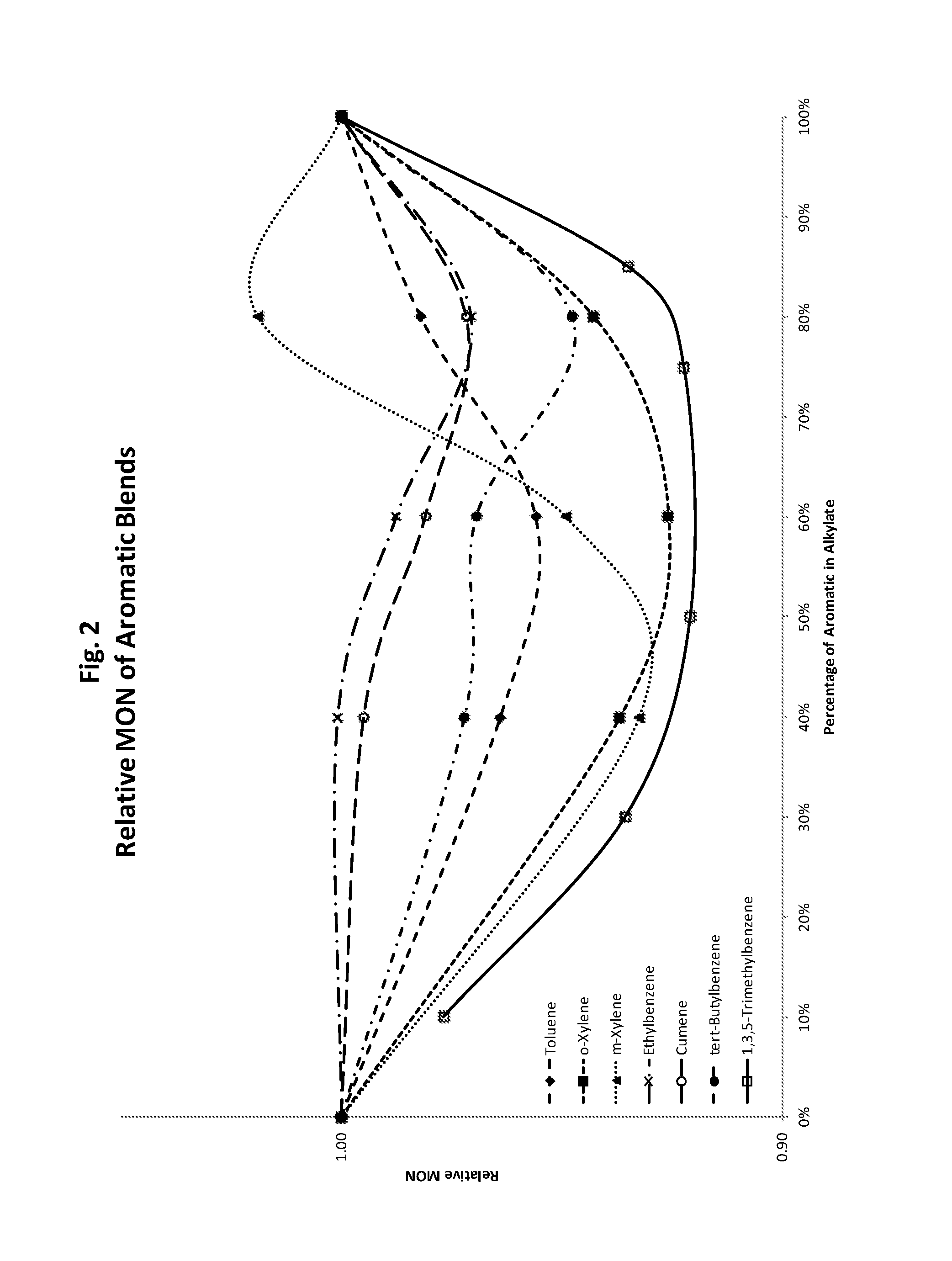High octane aviation fuel composition
a fuel composition and high octane technology, applied in the field of aviation fuels, can solve the problems of unresolved environmental and health concerns, limited use of tetraethyl lead in fuels, and the production of undesirable emissions of mm
- Summary
- Abstract
- Description
- Claims
- Application Information
AI Technical Summary
Problems solved by technology
Method used
Image
Examples
example 1
[0060]An alkylate was analyzed, with the results of the analyses listed in Table I.
TABLE ITotal compositionNormal Paraffins 1.7 wt. %Iso-Paraffins96.9 wt. %Olefins0.009 wt. % Naphthenes0.68 wt. %Aromatics0.19 wt. %C4 to C1099.1 wt. %C852.4 wt. %C8 compositionNormal ParaffinsNot detectedIso-Paraffins52.4 wt. %Olefins0.002 wt. % Naphthenes0.037 wt. % AromaticsNot detected
example 2
[0061]An alkylate similar to that of Example 1 (MON=90.6; 0.19 wt. % aromatics) was blended with the aromatics listed in Table II at ratios between 10% and 90% aromatic content. The resulting MON values of the blends are plotted in FIG. 1. Both meta-xylene and 1,3,5 TMB blended with the base alkylate achieve 100 MON at the lowest concentrations.
TABLE IIAromatic admixtureMON of AromaticToluene103.5o-Xylene100m-Xylene114.5EthylBenzene97.9Cumene99.3Tert-butylbenzene107.41,3,5 trimethylbenzene120.3
[0062]For each admixture, the following ratio was calculated:
Relative MON=MONactual / MONpredicted,
[0063]Where:[0064]MON, predicted=(MONalkylate+%aromatic*(MONaromatic−MONalkylate))MONalkylate=90.6%[0065]aromatics=total amount of aromatics in the admixture, expressed as a fraction[0066]MONaromatics=the MON of the pure aromatic, as listed in Table II.
[0067]The results are illustrated in FIG. 2. Surprisingly, the results show that m-xylene has a very different shaped response curve from the other ...
PUM
| Property | Measurement | Unit |
|---|---|---|
| MON | aaaaa | aaaaa |
| MON | aaaaa | aaaaa |
| MON | aaaaa | aaaaa |
Abstract
Description
Claims
Application Information
 Login to View More
Login to View More - R&D
- Intellectual Property
- Life Sciences
- Materials
- Tech Scout
- Unparalleled Data Quality
- Higher Quality Content
- 60% Fewer Hallucinations
Browse by: Latest US Patents, China's latest patents, Technical Efficacy Thesaurus, Application Domain, Technology Topic, Popular Technical Reports.
© 2025 PatSnap. All rights reserved.Legal|Privacy policy|Modern Slavery Act Transparency Statement|Sitemap|About US| Contact US: help@patsnap.com



